Yucca: why do the leaves of the plant turn yellow and dry?
Yucca belongs to the Agavov subfamily. It is an evergreen plant that can be grown in the form of a shrub or short tree. His homeland is Central America and Mexico.
Content:
- Description of the plant
- Reproduction
- Planting and leaving
- Pests
- Why do the leaves turn yellow and dry?
Description of the plant
Yucca is becoming more and more popular among gardeners every year. It is decorated with flower beds, rabatki, alpine slides. It is planted on the edges of the garden, along the edges of the alleys. The yucca grown in the room resembles a palm tree. It is installed in a well-lit place. Adult specimens are placed in hallways and other high rooms.
Popular names "garden palm" or "false palm" speaks about the appearance of the plant. The stem of the plant is low, invisible in some species. Plant height can reach 4 m. Inflorescences 2 m high are covered with beautiful flowers up to 7 cm long.
Grown in the open field or as a houseplant.
Yucca varieties:
- Filamentous is a plant without a stem. Its long narrow leaves are decorated with white threads at the edges. The flowers are white or cream. The variety is frost-resistant. The plant blooms all summer with beautiful large white bells. Fruiting only at home, where pollination occurs with a special species of butterflies.
- Glorious - yucca with red flowers located on a pyramidal inflorescence. Growing temperature - not lower than 13 ° С. It is recommended to grow in an open area only in the southern regions. But even there she requires shelter for the winter. You can transplant it into a greenhouse until spring.
- Elephant.
- Sizaya.
- Aloe leaf.
Reproduction
You can get a young plant for growing dividing the bush... You can propagate yucca with leaves or lateral shoots. The yucca that forms the trunk can be propagated by rooting cuttings cut from the trunk in a mixture of sand and peat. Their length must be at least 20 cm.
Seed propagation is possible, but it is a long and complex process that not everyone succeeds in.
The bush is divided in the spring, in March. A bush is dug, cuttings 5 cm long are cut from the rhizome. They are dried for four hours and planted in a greenhouse. Planting depth up to 7 cm. The soil in the greenhouse should be light, sandy loam.
After the tops of the sprouted cuttings appear on the surface, the film is removed. In autumn, young plants are transplanted to a permanent place or in pots. If grafting carried out in the fall, then it is necessary to plant in the ground in the spring. There is no need to divide the plant every year. Divide it every 3-4 years.
Planting and leaving
The most important thing in caring for a yucca is to choose the right place for planting it. It grows well in sunlit areas. Growing in the shade leads to rapid flower wilting. The soil on the site should be loose, well-drained. Growing without drainage in dense, heavy soil will likely lead to root rot and plant death.
Before planting the yucca in open ground, provide it with complete rest for several days. When replanting yucca, leave as much soil as possible near the roots. Transshipment is used more often.
Indoor yucca is installed on the east or west windows.
Provides sufficient light, but protects from bright sunlight, which can cause leaf burns. It is necessary to provide illumination for at least 16 hours. Yucca does not require much maintenance. The main thing is not to flood the plant. Watering infrequently, as the soil dries out. By determining the watering regime, you can focus on the state of the plant. If its leaves are elastic, the threads (in filamentous) do not sag, it is too early to water. When the leaves begin to curl and the threads begin to wither, it's time to water.
Loosening the soil makes it breathable. Old dead yucca leaves are removed. A healthy plant is fed from spring to autumn once or twice a month, sprinkling the leaves from below. Use yucca mixes that can be bought at a flower shop. Can be fertilized with infusion mullein... You should not apply fertilizer before and after transplanting, do not feed diseased plants. After transplanting, you need to wait until the yucca takes root, and only then fertilize. Indoor yuccas are kept at temperatures from 20 to 25 ° C.
Yucca pests
Yucca leaves and stems are often spoiled by snails and slugs, which love to feast on them. To get rid of them, you need to periodically treat the plant for prevention with insecticide solutions. You can periodically inspect the soil and leaves, especially in wet weather. The slugs found are removed.
Pests of room yucca:
- Sometimes the leaves and stem of indoor yucca can be affected by scabies. These are small insects, the body of which is covered with a durable shell. They usually accumulate in the leaf axils. They wither, the yucca stops growing. Scabbards do not respond well to insecticides. Therefore, they will have to be removed manually. But first, the plant is treated with a solution of laundry soap. Then they prepare an insecticide solution, moisten a soft stick with it (you can use an ear stick or an old toothbrush), and carefully remove the scabbard.
- If the room temperature is high and the air is dry, the yucca can be attacked by spider mites. It migrates from other plants affected by this pest. This is evidenced by a thin web and small brown spots. The tick itself is difficult to see. It settles on the lower part of the leaf and sucks the juices out of it. As a result, the leaves turn yellow and dry out. Remove the tick by wiping the leaf from base to tip with a tobacco solution, garlic, onion peel. Again, it is treated with a soap solution, then sprayed with an insecticide. Cover, if possible, the plant with a plastic bag and leave for half an hour. Remove the bag and leave the yucca for a couple of days. They are washed with a stream of water. After a week, repeat the procedure. The number of treatments depends on the presence of the pest. To better see it, use a magnifying glass. This pest can be found six months after the last procedure.
Why leaves turn yellow and dry
Yellowing of its leaves testifies to the disease or improper care of yucca. Yellow or brown spots on the leaves indicate fungal infections of the plant.
Leads to yellowing of the leaves:
- Excessive watering in spring and summer.
- Watering in winter.
- Temperature too high in winter.
- Low room temperature.
- Insufficient illumination.
- Indoor air is too dry.
In case of yellowing of the leaves, the cause is determined. The lower leaves turn yellow massively with insufficient moisture or overflow. In the first case, the plant needs to be watered more often. If the cause of yellowing is excessive watering, then fungi settle near the roots and on the stem. These parts of the plant must have festered. It is necessary to dig up the plant, if possible, remove rotten roots or part of the stem. They are treated with antifungal drugs, a light pink solution of potassium permanganate, dried. Transplanted into a new pot or a lighter and more spacious place.
If the plant cannot be saved, the remains are burned or removed so that the fungus does not infect other plants, and the pot in which the yucca grew is thrown away.
In case of damage to individual leaves, they are removed, the flower is not sprayed or watered for some time. It may be worth replanting the yucca to a more suitable location, or removing the small annual flowers that shade the soil around it. If the tips of the leaves turn yellow and dry, then the reason is insufficient illumination. yucca.
If it is too cold indoors in winter, the yucca leaves curl. Their edges turn brown. It happens that the plant freezes at night on the window, if the temperature drops sharply. Massive leaf fall may even begin. To avoid this, remove the yucca from the window at night. It cannot be installed in a draft. It should be borne in mind that the periodic yellowing and dropping of the lower leaves of the yucca is a natural process for species with a trunk. But at the same time, the rest of the leaves should look healthy.
More information can be found in the video:



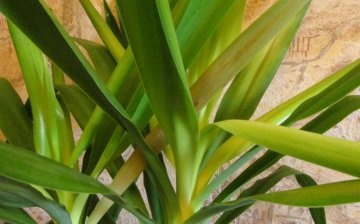
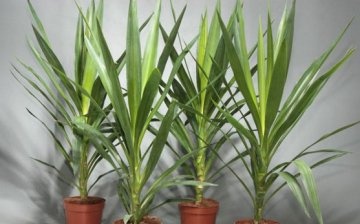
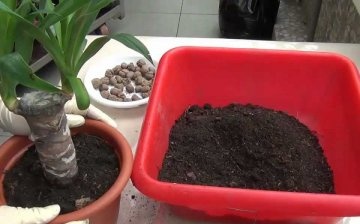
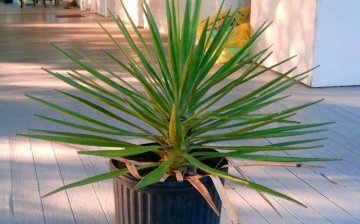
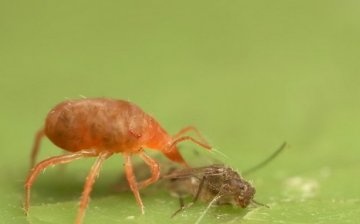







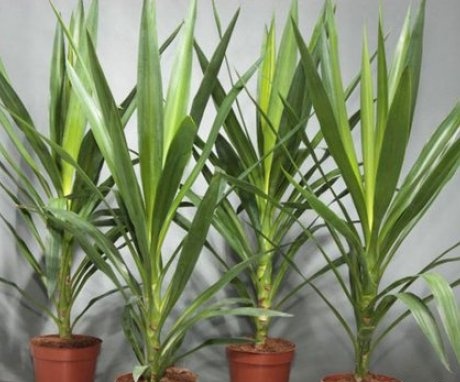
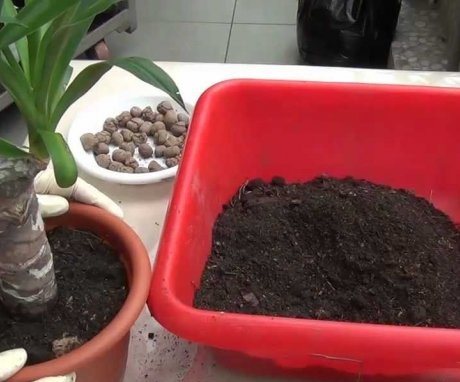
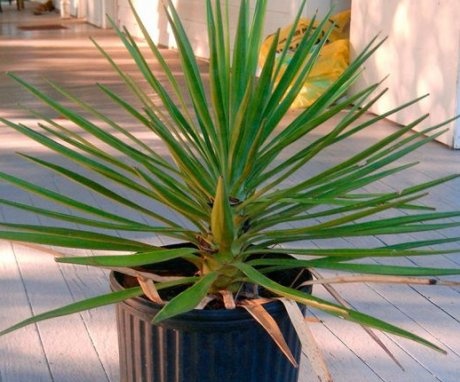

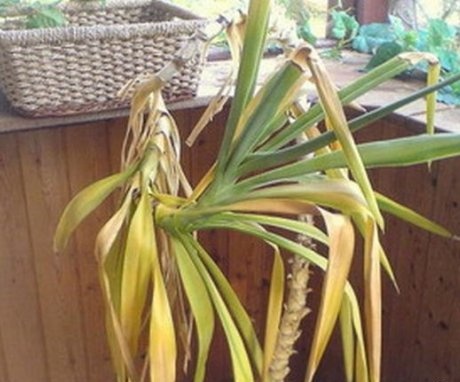
We have - this beautiful and already, rather large houseplant has died. It is possible that several factors influenced, excessive watering, sparse fertilization, insufficient light and dry air. It was necessary at least to spray it, but, we did - this is rare.